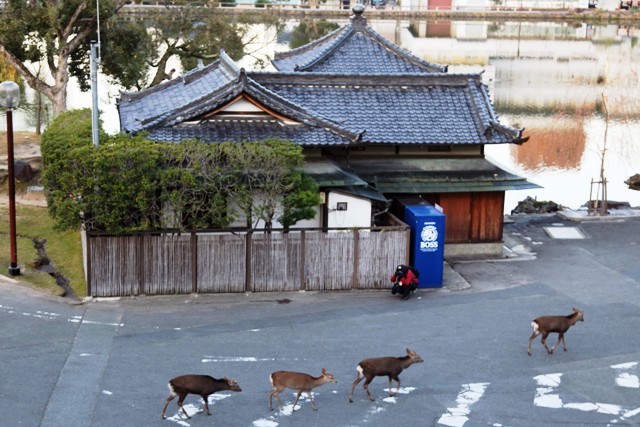Electric car Izukyu 103 of the 100 series stands at Izu-kogen rail yard
Winter is known as a season of illumination. Urban streets are nicely decorated with millions of LED lights. Recently, winter illuminations are more than just street events. Many amusement parks also hold winter illumination events to attract holiday makers.
This winter, I visited Izu Granpal Amusement Park to see its popular illumination event named "Granillumi". The park was ornamented with a total of 6 million LED lights. The most distinctive feature is the zip line passing above the illumination. Visitors can take a 400-meter trip glide above the illumination site. They can become a "meteor" during traveling this zip line.
To visit Izu Granpal Amusement Park, the nearest station is Izu-kogen on the Izukyu line. Before visiting the event site, I stopped by the Izu-kogen rail yard to take a photo of the old electric car, KuMoHa 103 of the 100 series. The 100 series was launched in 1961 when the Izukyu line was inaugurated. Since then, the 100 series had been functioned as the main fleet of this sightseeing railway on Izu Peninsula, but it was retired from the track by 2002. Only one unit, namely KuMoHa 103, survived as a yard-track shunting car. KuMoHa 103 once faced extinction because it became deteriorated, but Izukyu eventually preserved KuMoHa 103 as a special event car in 2012. Currently, we can rent it as a special train on the main track.
I enjoyed both beautiful illuminations and a historic electric car on Izu Peninsula.
This winter, I visited Izu Granpal Amusement Park to see its popular illumination event named "Granillumi". The park was ornamented with a total of 6 million LED lights. The most distinctive feature is the zip line passing above the illumination. Visitors can take a 400-meter trip glide above the illumination site. They can become a "meteor" during traveling this zip line.
To visit Izu Granpal Amusement Park, the nearest station is Izu-kogen on the Izukyu line. Before visiting the event site, I stopped by the Izu-kogen rail yard to take a photo of the old electric car, KuMoHa 103 of the 100 series. The 100 series was launched in 1961 when the Izukyu line was inaugurated. Since then, the 100 series had been functioned as the main fleet of this sightseeing railway on Izu Peninsula, but it was retired from the track by 2002. Only one unit, namely KuMoHa 103, survived as a yard-track shunting car. KuMoHa 103 once faced extinction because it became deteriorated, but Izukyu eventually preserved KuMoHa 103 as a special event car in 2012. Currently, we can rent it as a special train on the main track.
I enjoyed both beautiful illuminations and a historic electric car on Izu Peninsula.
Winter illumination event is held at Izu Granpal Park near Izu-kogen station on the Izukyu line











